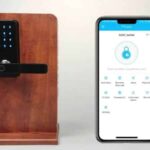I worked as a server in a restaurant for about seven years ranging from the Olive Garden to high-end French and Italian restaurants in the Chicago suburbs. Not long ago, I owned a food takeout business with various specialized food items.
While working at seven different restaurants, I’ve had a lot of split plate requests over the years.
From my
experience, these are the reasons restaurants have a split plate charge:
- Each seat is considered potential income: By splitting an entree, it’s a lost meal sold and am
opportunity cost for the restaurant.
It’s probably the toughest business to run and manage expenses;
splitting dishes won’t keep them in business. - Associated Costs: There are
still costs associated with using and cleaning dishes, napkins, and water
glasses. - Disincentive fee: Split plate charges
are applied to discourage sharing and incentivize buying a meal - Restaurants are businesses too: It’s small compensation for the restaurant and the server
- Extra work: Splitting a
plate in half slows the kitchen down, especially during a busy lunch or
weekend. The cooks spend extra time
making sure the portions are similar, and both dishes look the same when
cutting the food in half.
Customers
should likely tip on the higher end of the range. Even though the patron-only paid for one
dish, the server will still treat the table and its patrons like two
dishes. For example, the other guest will
likely need an extra napkin and utensils, refill their water, more bread, and
maybe additional condiments from the kitchen.
I once had a guest
bring in her own frozen dinner from the grocery store. She asked me to heat it and plate it for her
as she was on a diet. Restauranteurs
think if you choose to dine in their restaurant, you should consume their food
and their wine.
Split charges
are not universal, but common enough. If the restaurant executes on
service, food, experience, and value, then the $2-$3 split charge should not
deter most diners.
Restaurant Corkage Fee
Most
restaurants charge a wine corkage fees like they charge a fee for a split plate
charge. Many servers and owners see it
as trying to be cheap and avoid letting the restaurant make money on the sale
of wine. Some states make restaurant corkage fees illegal.
Some states
have laws where it’s illegal to bring your own alcohol into a restaurant,
including:
- Arizona
- Colorado
- Illinois
- Massachusetts
- New Mexico
Please let us know if you agree or disagree with shared plate charges at restaurants? How about wine corking fees?


TE PUEDE INTERESAR